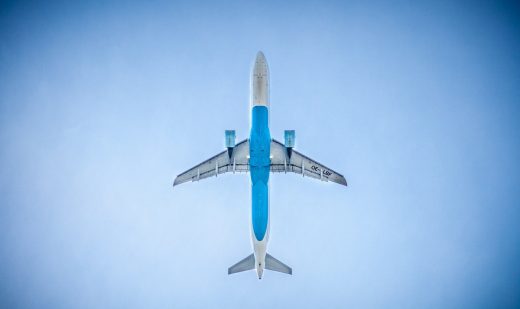Trusted US European Travel Ban Air Travelers Advice, American Flight Tips, Coronavirus Airline Guide
US European Travel Ban Air Travelers
19 Mar 2020
European Travel Ban Guide
What the new European travel ban by the US means for Air Travelers
If you want to create the biggest of scares wherever you are at the moment, all you have to do is sneeze and cough. Although both were symptoms known to be peculiar to flu, the rapid spread of the coronavirus has thrown the entire human race into a state of fear.
As a result, things that were once considered natural are now being dreaded, acts that were considered cultural are now being avoided, and of course, our daily lives are now in a state of pause.
But of all the consequences that have come with the spread of this pandemic, none has been more pronounced than the effects on the global transport and travel system.
The rapid spread of COVID-19 around the globe has thrown the international travel industry into chaos, with so many countries, including the US, in particular, banning flights and travels.
It is upon this ground that president trump announced recently that foreigners who had been in certain European countries (the Schengen countries) for the last 14 days would not be allowed to fly to the United States.
But what exactly does this ban mean for travelers? Some travelers have quipped. Well, the answers to that have been compiled in the form of a guide, which will now be discussed in this post. So, sit tight and find out how the European travel ban affects you.
Which countries are affected?
The US travel ban applies to every member of the EU that belongs to the Schengen Area of the continent. Typically, these countries allow travel amongst themselves without passport checks or restrictions.
The countries are France, Estonia, Czech Republic, Belgium, Denmark, Finland, Italy, Latvia, Hungary, Iceland, Liechtenstein, Lithuania, Luxembourg, Poland, Slovakia, Sweden, Switzerland, Spain, Malta, Netherlands, and Norway.
Although there are some parts of Scandinavia (Iceland and Norway) which do not belong to the European Union but because they’ve opted into the Schengen Area, they’re also accepted by the ban. By and large, travels and flights from these countries into the US are banned temporarily for a period of 30 days, effective from March 13, 2020
Is any European country exempted?
The only part of Europe that is exempted from the travel ban is the United Kingdom, a region which comprises of countries including England, Wales, Scotland, and Northern Ireland.
Ireland is another country that is exempted from the ban, and that is because the country doesn’t belong to the Schengen Area.
What is the fate of travelers from countries like Bulgaria, Croatia, Cyprus, and Romania?
Although by definition, these four countries shouldn’t be affected by the ban since they’re not mentioned as part of the Schengen Area. However, since there are no direct flights from these countries to the United States, passengers will always need to first travel to a country that has a direct flight to the US (Instanbul, London, Frankfurt), many of which are affected by the ban.
How does the ban affect travelers with the ESTA visa?
Although it is expected that with an ESTA visa, a traveler should be qualified for a US travel waiver, the pandemic nature of the coronavirus means that the US would not be able to completely respect this obligation for the time being. So if you have an ESTA visa, but you’re a citizen or have stayed in any of the banned countries for the last 14 days, you won’t be able to gain entry into the US.
However, for travelers coming from the UK and other non-European countries, the ESTA visa still remains a valid option of entering the US, provided that the non-European country is part of the Visa Waiver Program (VWP).
How the travel ban affects Air Travelers
If you are a citizen of the US, you need not dread or get worried about the ban, as it doesn’t necessarily affect your travel plans. According to the State Department Website, US citizens that are currently in any of the banned Schengen countries are free to return to the U.S. while the ban is in effect. However, it is important to know that travelers would be required to self-quarantine for 14 days.
“U.S. citizens and legal permanent residents will be permitted to return from the European Schengen area,” according to the State Department website. “The Department of Homeland Security will be issuing instructions requiring U.S. passengers that have been in the Schengen area to travel through select airports where the U.S. Government has implemented enhanced screening procedures.”
What about airlines?
The ban is expected to affect the over 7,300 flights (over 2 million seats) that were scheduled to fly from those 26 nations to the U.S. during the 30-day period.
Needless to say, the ban has dealt an additional blow to the already struggling airline industry, particularly trans-Atlantic carriers. Norwegian Air announced plans to cancel about 4,000 flights and temporarily lay off about 50% of employees.
Delta will suspend four routes between the U.S. and Paris and three between the U.S. and Amsterdam once the ban goes into effect. American Airlines will do the same for flights to and from Amsterdam, Frankfurt, Munich, and Zürich and then eventually Paris, Madrid, and Barcelona. United intends to cut down on European flights after March 19.
With this in mind, Americans traveling abroad may want to pay attention to flight availability if they intend to return home during this time.
American, Delta and United all said they would be capping fares on flights from Europe to the U.S. “The safety and health of our customers and employees is always our highest priority,” Delta said in a statement, noting that the carrier would “continue to quickly make adjustments to service, as needed, in response to government travel directives.”
Comments on this guide to US European Travel Ban Air Travelers article are welcome.
Airport Designs
Architects: RMJM Serbia

photo © Sheremetyevo Press Service
Terminal C in Sheremetyevo International Airport
American Architecture Designs
American Architectural Designs – selection:
Nancy and Rich Kinder Building Houston
Comments / photos for the US European Travel Ban Air Travelers Advice page welcome





